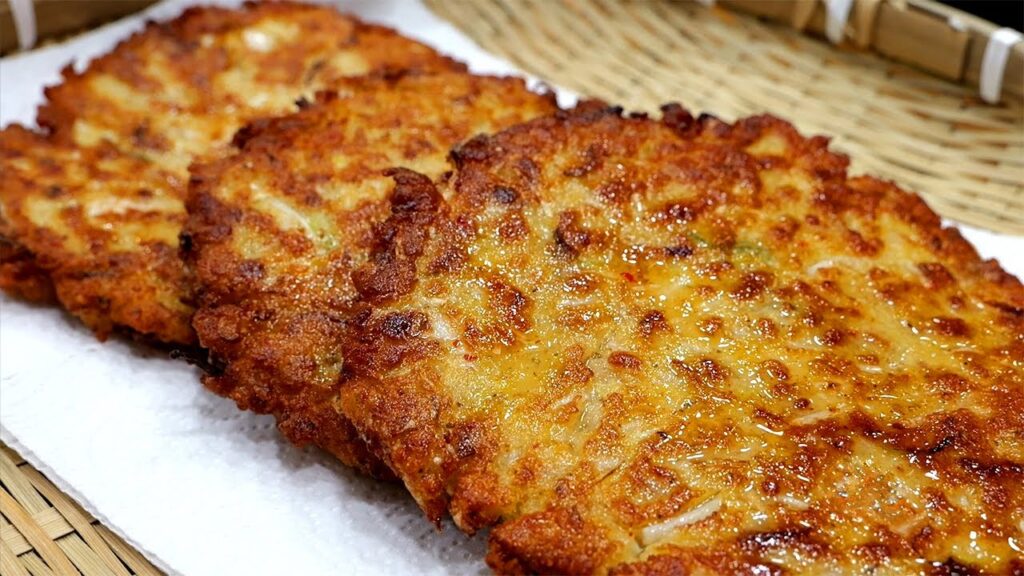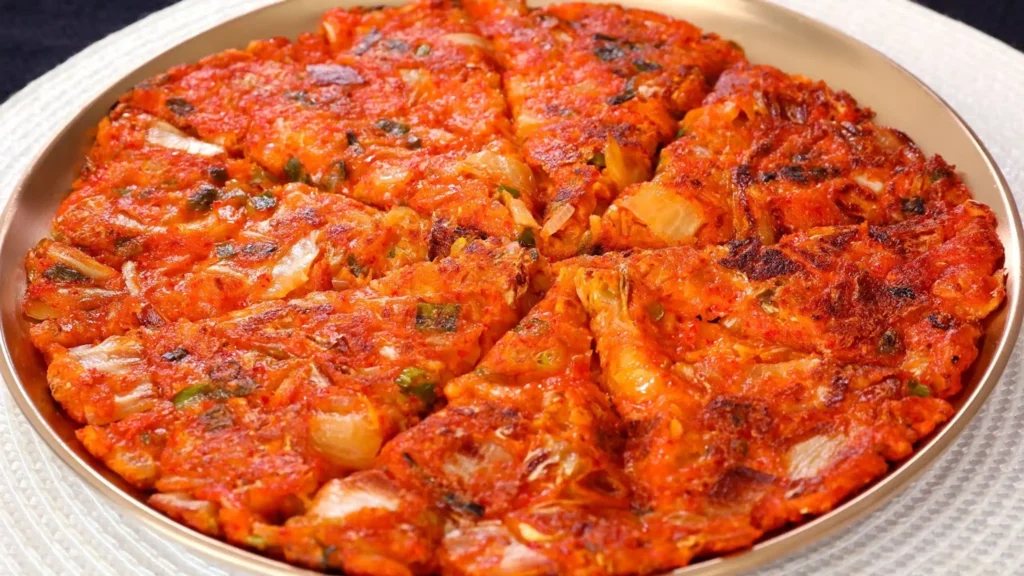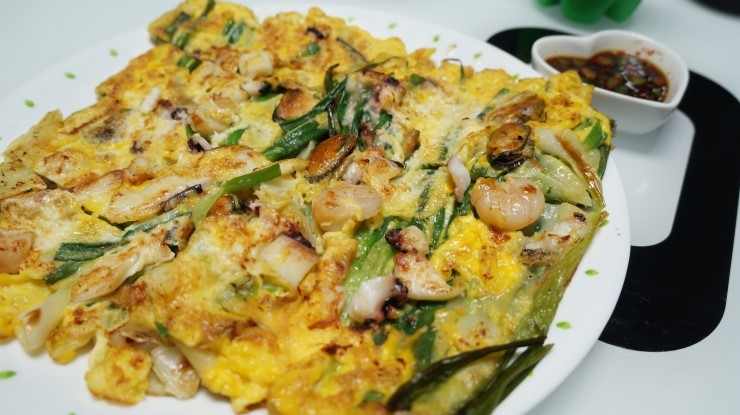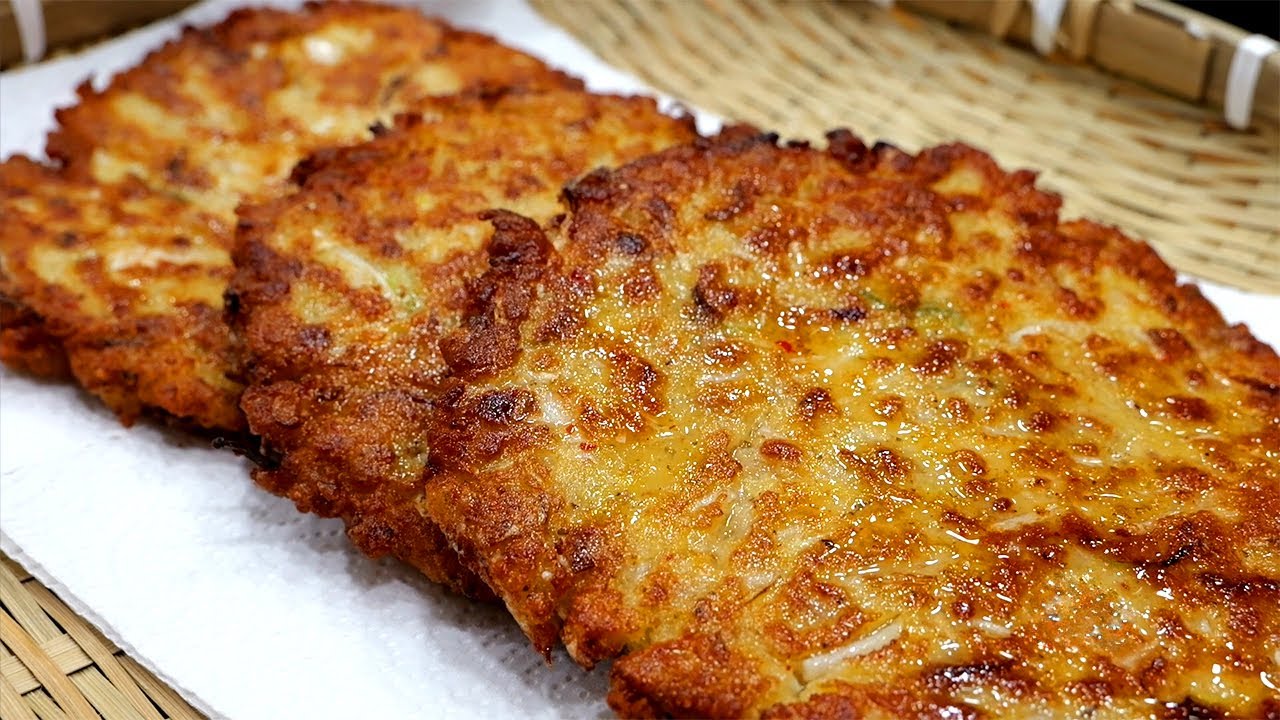Jeon (전) is a beloved Korean dish that could best be described as a savory pancake. But it is so much more than that simple translation suggests. Made by coating various ingredients, such as vegetables, seafood, kimchi, or mung beans, in a light batter, jeon is then pan-fried to a golden crisp on the outside, while remaining tender within.

Jeon is often prepared and shared during meaningful gatherings, especially on holidays such as Chuseok (the autumn harvest festival) and Seollal (Lunar New Year), when families come together to honor ancestors and celebrate the changing of the seasons. On such days, the kitchen comes alive with the sizzle of jeon frying in oil, the savory scent mingling with laughter and conversation.
The delicacy, however, is not reserved only for grand occasions. On rainy days, many Koreans find themselves longing for a plate of jeon, believing the sound of frying batter echoes the gentle rhythm of falling rain. It’s a culinary comfort against the grey, you could say. It’s also a popular choice for anju (dishes shared over drinks) among friends, its crisp texture and savory flavor the perfect companion to a glass of makgeolli, traditional rice wine, or soju.
These are the most popular types of jeon, each carrying its own unique character:
Kimchi jeon (김치전) infuses the tang and spice of well-fermented kimchi into every bite

Haemul pajeon (해물파전) brings together a medley of fresh seafood and scallions

Nokdu jeon (녹두전) is made from ground mung beans and often filled with savory sprouts. *(this is my favorite!)
Buchu jeon (부추전) is vibrant with green garlic chives
Gamja jeon (감자전) is made of potato
Dongtae jeon (동태전) is slices of pollock fish, coated in egg and fried
Gochu jeon (고추전) is green chili peppers stuffed with meat or vegetables, then battered and fried
Hobak jeon (호박전) is thin slices of zucchini, dusted in flour, dipped in egg, and pan-fried
Saengseon jeon (생선전) is assorted fish fillets, coated in egg and fried
Yachae jeon (야채전) is made with mixed vegetables
How to make Kimchi jeon:
Ingredients:
- 1 cup well-fermented napa cabbage kimchi, chopped (plus 2–3 tablespoons of kimchi brine)
- ½ small onion or 2 scallions, thinly sliced
- ½ cup all-purpose flour
- 2–3 tablespoons rice flour (optional, for extra crispness)
- ½ cup cold water (adjust as needed)
- 1 egg (optional, for a richer texture)
- 1 teaspoon sugar (optional, to balance the tang)
- ¼ cup thinly sliced pork belly or small shrimp (optional, for extra savor)
- A pinch of salt (to taste)
- Vegetable oil for frying
Instructions:
- Prepare the kimchi.
Roughly chop the kimchi into bite-sized pieces. If it’s especially sour or well-aged, all the better; the deeper the flavor, the more vibrant the pancake. - Make the batter.
In a mixing bowl, combine flour, rice flour (if using), and a pinch of salt. Stir in the cold water, egg (if using), and the kimchi brine. Mix until just combined. - Bring it together.
Add the chopped kimchi, sliced onion or scallion, sugar (if using), and any optional pork or seafood. Stir gently until the batter coats everything: thick, but pourable. - Heat the pan.
Place a generous swirl of oil in a nonstick or cast-iron skillet. Heat over medium-high until the oil shimmers. - Cook the jeon.
Pour the batter into the hot pan, spreading it out to about ½-inch thick. Let it sizzle undisturbed until the edges are crisp and the bottom is golden (about 3–4 minutes). - Flip and finish.
Carefully flip the pancake with a spatula. Press gently and cook another 2–3 minutes until both sides are golden and crispy. - Serve warm.
Slide the jeon onto a cutting board and slice into wedges. Serve immediately, perhaps with a simple dipping sauce of soy sauce and a touch of vinegar.

